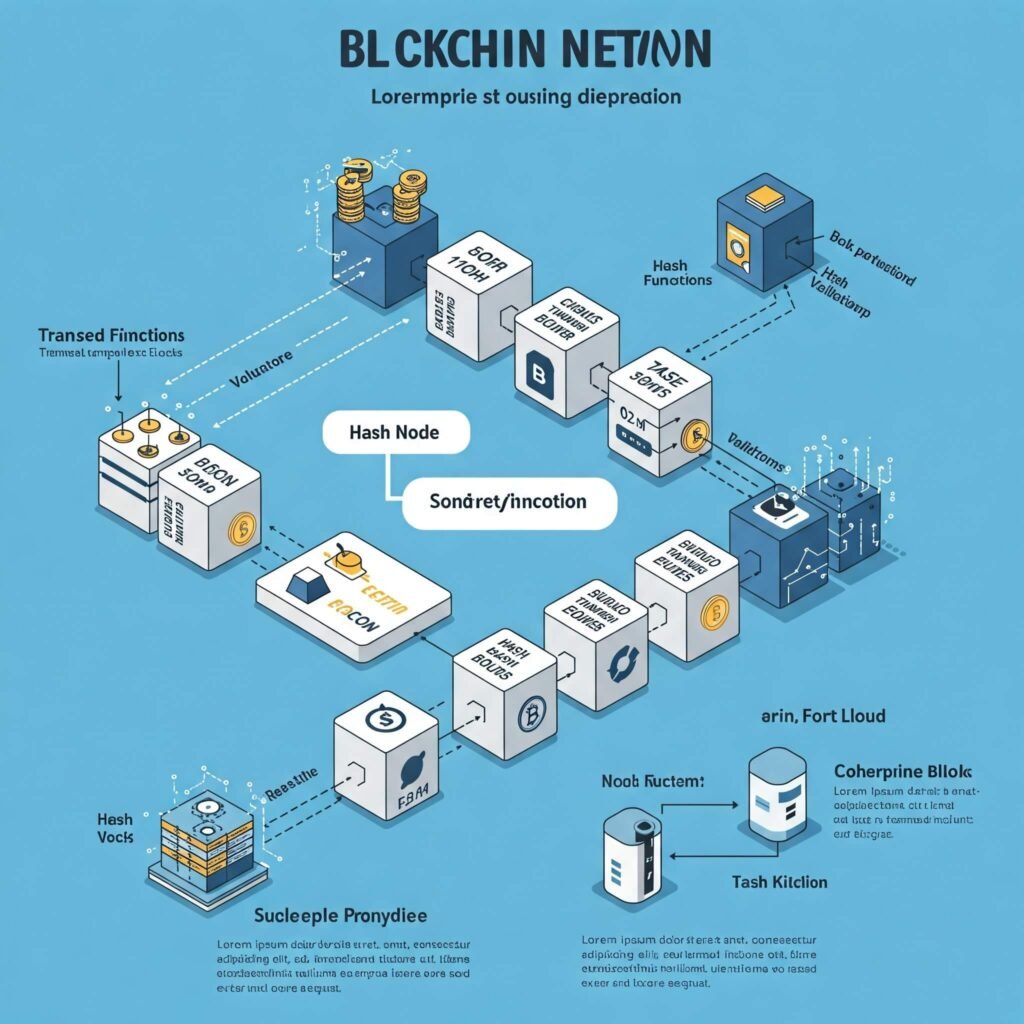Blockchain technology is revolutionizing the digital world, serving as the backbone of cryptocurrencies like Bitcoin and Ethereum. But what exactly is blockchain technology, and how does it enable secure, decentralized financial systems? In this article, we’ll break down the essentials of blockchain, explore how it powers cryptocurrencies, and highlight its broader applications—all in a way that’s easy to grasp, even if you’re new to the topic.
What Is Blockchain Technology?
Blockchain technology is a decentralized, digital ledger that records transactions across multiple computers. Unlike traditional databases controlled by a single entity, a blockchain is distributed, meaning no one party has full control. This makes it transparent, secure, and resistant to tampering.
Here’s how it works in simple terms:
- Blocks: Data is stored in “blocks,” each containing a list of transactions.
- Chain: Blocks are linked chronologically, forming a chain secured by cryptography.
- Decentralization: Copies of the blockchain are stored on nodes (computers) worldwide, ensuring transparency.
For example, when you send Bitcoin to someone, the transaction is recorded on the blockchain, verified by nodes, and becomes permanent. This eliminates the need for intermediaries like banks.
Outbound Link: Learn more about blockchain basics from IBM’s Blockchain Guide.

How Blockchain Technology Powers Cryptocurrencies
Blockchain technology is the engine behind cryptocurrencies, enabling secure, transparent, and efficient digital transactions. Here’s a closer look at how it works:
1. Enabling Secure Crypto Transactions
Cryptocurrencies rely on blockchain’s cryptographic security to protect transactions. Each transaction is encrypted and verified by miners (or validators in some systems) who solve complex mathematical puzzles. Once verified, the transaction is added to the blockchain, making it immutable.
Real-World Example: Bitcoin’s blockchain ensures that no one can double-spend their coins, a problem traditional digital currencies struggled with.
2. Decentralized Control
Unlike centralized banking systems, cryptocurrencies operate on decentralized networks. Blockchain technology distributes the ledger across thousands of nodes, reducing the risk of hacks or manipulation. For instance, Ethereum’s blockchain supports not only currency but also decentralized apps (dApps).
3. Supporting Smart Contracts
Some blockchains, like Ethereum, use smart contracts—self-executing agreements coded into the blockchain. These automate processes, such as transferring funds when conditions are met, without intermediaries.
Data Insight: According to CoinMarketCap, Ethereum processes over 1 million transactions daily, many powered by smart contracts.
Outbound Link: Explore smart contracts on Ethereum’s Official Site.

Benefits of Blockchain Technology in Cryptocurrencies
Blockchain technology offers several advantages that make cryptocurrencies appealing:
- Security: Cryptographic encryption ensures transactions are tamper-proof.
- Transparency: Public blockchains allow anyone to view transaction histories.
- Efficiency: Peer-to-peer transactions eliminate middlemen, reducing costs.
- Accessibility: Cryptocurrencies enable financial access in underbanked regions.
For example, in countries with unstable currencies, Bitcoin provides a decentralized alternative for storing value.
Beyond Cryptocurrencies: Other Uses of Blockchain Technology
While blockchain is synonymous with cryptocurrencies, its applications extend far beyond:
- Supply Chain Management: Companies like Walmart use blockchain to track products from source to store, ensuring authenticity.
- Healthcare: Blockchain secures patient data, enabling safe sharing between providers.
- Voting Systems: Blockchain can create tamper-proof digital voting platforms.
Outbound Link: Discover blockchain’s non-crypto uses at Forbes.

Actionable Takeaways for Understanding Blockchain Technology
To dive deeper into blockchain technology and cryptocurrencies:
- Start Small: Experiment with a crypto wallet like MetaMask to understand transactions.
- Stay Informed: Follow platforms like CoinDesk for crypto news.
- Learn the Risks: Understand volatility and security practices before investing.
By grasping blockchain’s fundamentals, you’ll be better equipped to navigate the crypto world and its innovations.
Conclusion
Blockchain technology is more than just the foundation of cryptocurrencies—it’s a transformative force reshaping finance, security, and trust in the digital age. By powering secure crypto transactions, enabling decentralization, and supporting smart contracts, blockchain is driving the future of money and beyond. Whether you’re a crypto enthusiast or a curious beginner, understanding blockchain opens the door to exciting possibilities.




